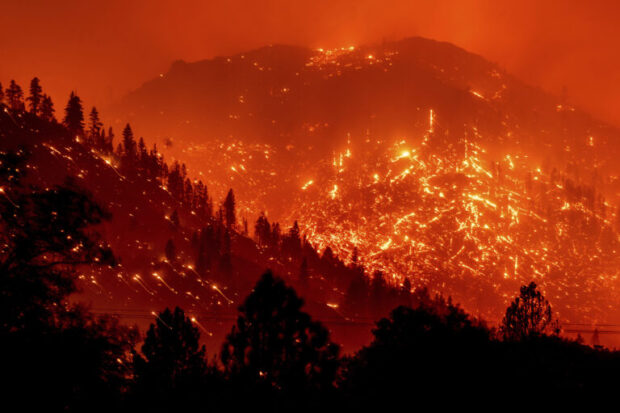As wildfires raged across Northeastern Canada in June, spreading toxic smoke across a large swath of Eastern and Central U.S., risk and insurance executives were reminded of the myriad challenges associated with wildfire risk.
Only a few weeks earlier, in April, Southern California experienced its first wildfire of 2023 when 130 acres of San Bernardino Forest burned in an hour. Subsequently, State Farm and Allstate announced they will no longer write homeowners policies in California as wildfire threats become increasingly dangerous, difficult to predict, prepare for and manage.
Not surprisingly, eight of the 10 costliest wildfires in U.S. history listed by the Insurance Information Institute occurred in the past six years. From a safety, risk management and insurance perspective, wildfire continues to be a growing and evolving peril, particularly across California, the Western U.S. and Canada, as well as in South America, Australia/New Zealand, and parts of Europe and Africa.
One of the most daunting underwriting challenges in managing wildfire risk is the need to evaluate models designed to gauge the frequency and severity of wildfires. Approaches used in traditional exposure models, such as those for windstorm and flood, have not proven to be very effective for wildfire risk.
At the same time, there are many InsurTech providers delivering solutions based on location-level imagery and AI-based risk scores. However, overly simplistic “scoring” of the risk hides the nuances and specific variables contributing to wildfire risk that are necessary to facilitate informed underwriting decisions if underlying factors contributing to the scores are not transparent.
Valuable scoring models would equip brokers with evidence needed to negotiate on behalf of clients in wildfire-prone regions and to make the case that they may still qualify for insurance. Otherwise, an “insurance-worthy” client remains uninsured — and all parties lose.
On a macro scale, the California actions taken by two leading insurers are emblematic of the outcome: The inability to evaluate and price risk, leading to coverage gaps — not to mention completely uninsured exposures — for risk owners as well as lost opportunities for insurers and brokers.
Building Next-Generation Models for Wildfire Risk
Despite the various challenges in creating meaningful approaches to model wildfire exposure, new tools for capturing and analyzing data from multiple sources are leading to new solutions.
One key is to provide transparency into the multiple variables that drive wildfire risk as well as how each variable increases wildfire hazard exposure or affects resilience for a particular property. Today, there are reliable methods to capture data needed for assessing climate, topography and fuels, all of which have significant impacts on wildfire risk at specific locations.
The next generation of models must consider time dimensions, such as fuel height changes over time, including regrowth of vegetation in burn areas. To be as accurate as possible, models must be updated at least annually.
Notably, many aspects of wildfire-related exposures, such as stock throughput, rely on timing over the course of the year. In addition, models should be calibrated based on climate conditions over time.
Models should simultaneously consider historical climate data over a significant period of time (30 years) and provide additional weight for abnormal weather conditions in the previous year.
In modeling wildfire risk going forward, geo-visualization becomes key. This enables users to gain context around numbers generated and literally to see the variability of risk in the vicinity of a property. All of this should be validated using the latest high-resolution imagery of buildings and surrounding areas.
Finally, the models also need to consider the vulnerability or resilience of a property, including fireproof construction, fire protection systems, available water supplies and firefighting response resources, surrounding buildings and their construction, as well as natural and man-made barriers to fire spread.
Although drought and other climate conditions are exacerbating and expanding the risk of wildfires around the world, the next generation is delivering reliable models. The ability to capture a wide range of relevant exposure-related data and to assess it in a granular way through artificial intelligence and data science may help facilitate more effective insurance underwriting, as well as inform related risk mitigation measures, disaster response and crisis management.
Top photo: AP Photo/Noah Berger





















 Berkshire Hathaway Enters Post-Buffett Era as Share Prices Fall
Berkshire Hathaway Enters Post-Buffett Era as Share Prices Fall  Northern California Flooding This Weekend Caused by Heavy Rain, High Tides
Northern California Flooding This Weekend Caused by Heavy Rain, High Tides  NOAA Announces Latest AI-Driven Global Weather Models
NOAA Announces Latest AI-Driven Global Weather Models  Five AI Trends Reshaping Insurance in 2026
Five AI Trends Reshaping Insurance in 2026 


